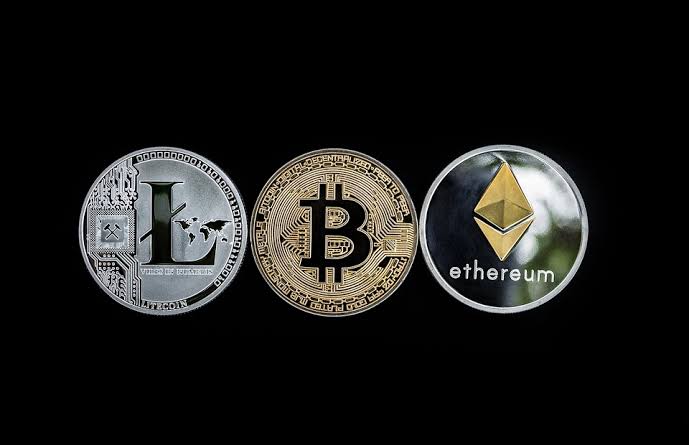The cryptocurrency market continues to evolve rapidly, with altcoins representing significant opportunities for investors seeking alternatives to Bitcoin. October 2025 presents compelling investment prospects across various altcoin categories, from established blockchain platforms to emerging digital assets with unique use cases.Market conditions and technological developments have created favorable entry points for several promising cryptocurrencies.
Selecting the right altcoins requires careful analysis of multiple factors including technological innovation, market adoption, and long-term viability. Ethereum leads as the best altcoin investment option, though several other projects demonstrate strong fundamentals and growth potential. Understanding both the opportunities and risks associated with altcoin investments helps investors make informed decisions in this dynamic market environment.
1) Solana (SOL)
Solana remains one of the most promising blockchain platforms for October 2025. The network offers high-speed transactions and low fees, making it attractive for developers and users alike.
The platform processes thousands of transactions per second using its proof-of-history consensus mechanism. This technical advantage positions Solana as a strong competitor to Ethereum for decentralized applications.
Recent market developments show Solana leading crypto ETF applications with eight filings under SEC review. This institutional interest indicates growing mainstream adoption potential.
Solana’s ecosystem continues expanding with new DeFi protocols, NFT marketplaces, and gaming applications. The network hosts numerous popular projects that drive transaction volume and token demand.
The recent crypto market downturn presents a potential buying opportunity for Solana investors. Market analysts suggest considering buying the dip amid current price levels.
Solana consistently appears on expert cryptocurrency investment lists alongside Bitcoin and Ethereum. The token benefits from both institutional backing and retail investor interest.
The platform’s technical capabilities and growing ecosystem make it a compelling altcoin choice for October 2025.
2) Pepe (PEPE)
Pepe has emerged as one of the prominent meme tokens gaining attention from institutional investors. Crypto whales bought PEPE during the second week of October 2025, signaling potential confidence in the token’s short-term prospects.
The meme coin has demonstrated resilience amid weak market momentum. Large-scale investors continue accumulating PEPE tokens despite broader cryptocurrency market uncertainties.
PEPE operates as an ERC-20 token on the Ethereum blockchain. The token draws its identity from the popular internet meme character Pepe the Frog.
Trading volume and whale activity serve as key indicators for PEPE’s market performance. The recent institutional interest suggests possible price movements in the coming weeks.
Market analysts monitor PEPE alongside other meme tokens for signs of recovery. The token’s performance often correlates with broader meme coin market trends and social media sentiment.
PEPE’s liquidity remains concentrated on major centralized exchanges. Investors can access the token through various trading platforms that support ERC-20 tokens.
The token’s price volatility requires careful risk management strategies. PEPE exhibits typical meme coin characteristics including rapid price swings and community-driven momentum.
3) Kaspa (KAS)
Kaspa operates as a proof-of-work cryptocurrency that uses a unique blockDAG architecture. This technology allows the network to process multiple blocks simultaneously rather than sequentially.
The platform aims to solve the blockchain trilemma by offering high throughput, security, and decentralization. Kaspa can theoretically process hundreds of transactions per second.
Current market data shows Kaspa holding around $0.08, indicating price stability in recent weeks. The token has maintained this level despite broader market fluctuations.
Analysts have highlighted Kaspa as a top altcoin heading into November. This positioning suggests continued interest from cryptocurrency investors.
The project continues to develop its ecosystem with ongoing technical improvements. Kaspa’s mining community remains active, supporting network security through distributed hash power.
Trading volume for KAS remains consistent across major exchanges. The cryptocurrency attracts both short-term traders and long-term holders interested in its technological approach to scalability.
4) XRP (XRP)
XRP has shown strong momentum in October 2025, with analysts tracking its performance closely. The cryptocurrency has recovered from previous legal challenges and is gaining institutional attention.
Ripple (XRP) is having a good October so far, with analysts predicting potential price movements. Some forecasts suggest the token could reach higher valuations if current market sentiment continues.
The token benefits from its established position in cross-border payments and banking partnerships. Ripple’s technology focuses on facilitating fast, low-cost international transactions for financial institutions.
XRP’s recent price action has attracted investor interest, though market volatility remains a consideration. XRP’s rally may be back in motion, but investors are evaluating whether current levels present buying opportunities.
The cryptocurrency’s utility in the payments sector distinguishes it from other altcoins. Financial institutions continue to explore Ripple’s blockchain solutions for international money transfers.
XRP appears among top altcoins to invest in before potential market expansion. Its established infrastructure and partnerships provide fundamental support for future growth potential.
5) Filecoin (FIL)
Filecoin operates as a decentralized storage network that transforms cloud storage through blockchain technology. The protocol allows users to rent unused hard drive space and earn FIL tokens as compensation.
The network creates a marketplace where storage providers compete to offer the most cost-effective solutions. This competition typically drives down storage costs compared to traditional centralized services.
Filecoin sees $193M volume in October 2025, indicating sustained trading interest. The high volume suggests active participation from both institutional and retail investors.
The project addresses growing demand for decentralized data storage solutions. Companies increasingly seek alternatives to centralized cloud providers for data sovereignty and cost reduction.
Filecoin’s proof-of-spacetime consensus mechanism ensures storage providers actually store client data over specified periods. This verification system maintains network integrity and user trust.
The token serves multiple functions within the ecosystem, including storage payments and network security staking. Storage providers must stake FIL tokens as collateral, creating natural token demand.
Recent partnerships with major enterprises have expanded Filecoin’s adoption in the Web3 infrastructure space.
Key Factors to Consider Before Buying Altcoins
Successful altcoin investing requires evaluating current market conditions, analyzing both fundamental and technical indicators, and assessing the long-term viability of blockchain projects. These three critical areas help investors make informed decisions in the volatile cryptocurrency market.
Market Trends and Sentiment
Market sentiment drives altcoin prices more than fundamental value in many cases. Bitcoin and Ether show mixed performance amid market volatility while institutional interest continues growing through ETF products.
Investor emotions create buying and selling waves that affect entire market sectors. Fear leads to mass sell-offs while optimism triggers rally periods across multiple altcoins simultaneously.
Social media platforms, news coverage, and influential figures significantly impact market sentiment. Twitter discussions, Reddit communities, and YouTube channels often precede major price movements in specific altcoins.
Key sentiment indicators include:
- Trading volume changes
- Social media mention frequency
- Google search trends
- Futures market positioning
Regulatory announcements from major economies create immediate market reactions. Positive regulatory clarity typically boosts prices while restrictive policies cause sharp declines.
Fundamental vs. Technical Analysis
Fundamental analysis examines the underlying value and potential of blockchain projects. This includes evaluating team credentials, technology innovation, partnerships, and real-world adoption rates.
Technical analysis focuses on price charts, trading patterns, and market indicators. Chart patterns like support and resistance levels help predict short-term price movements.
Fundamental factors to evaluate:
- Development team experience
- Technology scalability
- Partnership quality
- Token economics
- Competition analysis
Technical indicators to monitor:
- Moving averages (50-day, 200-day)
- Relative Strength Index (RSI)
- Trading volume patterns
- Support and resistance levels
Most successful investors combine both approaches. Fundamental analysis identifies promising projects while technical analysis helps time entry and exit points effectively.
Project Utility and Roadmap
Real-world utility determines long-term altcoin success more than speculation or hype. Projects solving actual problems attract sustained investment and user adoption over time.
Development roadmaps reveal project ambitions and execution capabilities. Consistent milestone achievement demonstrates team competence while repeated delays indicate potential issues.
Utility assessment criteria:
- Problem being solved
- Target market size
- Competitive advantages
- Adoption metrics
- Revenue generation potential
Active development communities signal project health and longevity. GitHub activity, developer engagement, and regular updates indicate ongoing progress and commitment.
Token economics affect supply and demand dynamics. Inflationary tokens may lose value while deflationary mechanisms can support price appreciation during adoption growth.
Risks and Challenges in Altcoin Investment
Altcoin investments face significant market volatility with price swings exceeding 20% daily, while regulatory uncertainty and security vulnerabilities create additional risks that can impact portfolio values.
Volatility and Price Fluctuations
Altcoins experience extreme price volatility that surpasses traditional assets by substantial margins. Daily price movements of 10-30% are common, with some altcoins losing 50-80% of their value within weeks during market downturns.
Market sentiment drives rapid price changes in altcoin markets. Social media posts, news announcements, and whale transactions can trigger massive buying or selling pressure within hours.
Key volatility factors include:
- Low market capitalization
- Limited trading volume
- Speculative trading behavior
- Market manipulation by large holders
Cryptocurrency carries significant risk including potential loss of investments. Investors must prepare for scenarios where altcoin values drop to near zero during bear markets.
Liquidity issues amplify volatility in smaller altcoins. Limited trading pairs and exchange listings can create price gaps when investors attempt to buy or sell large quantities.
Security and Regulatory Considerations
Altcoin investments face evolving regulatory frameworks that vary significantly across jurisdictions. Government actions can immediately impact altcoin prices and accessibility through exchange restrictions or trading bans.
Smart contract vulnerabilities expose altcoin holders to technical risks. Coding errors, exploit attacks, and protocol failures have resulted in millions of dollars in losses for investors.
Primary security risks include:
- Exchange hacks and fund theft
- Private key loss or compromise
- Phishing and social engineering attacks
- Smart contract exploits
Regulatory compliance requirements change frequently across different countries. Tax obligations, reporting requirements, and legal status updates can affect altcoin investment strategies and profitability.
Centralized exchange risks create additional exposure points for altcoin investors. Platform failures, regulatory shutdowns, and withdrawal restrictions can temporarily or permanently lock investor funds.


































